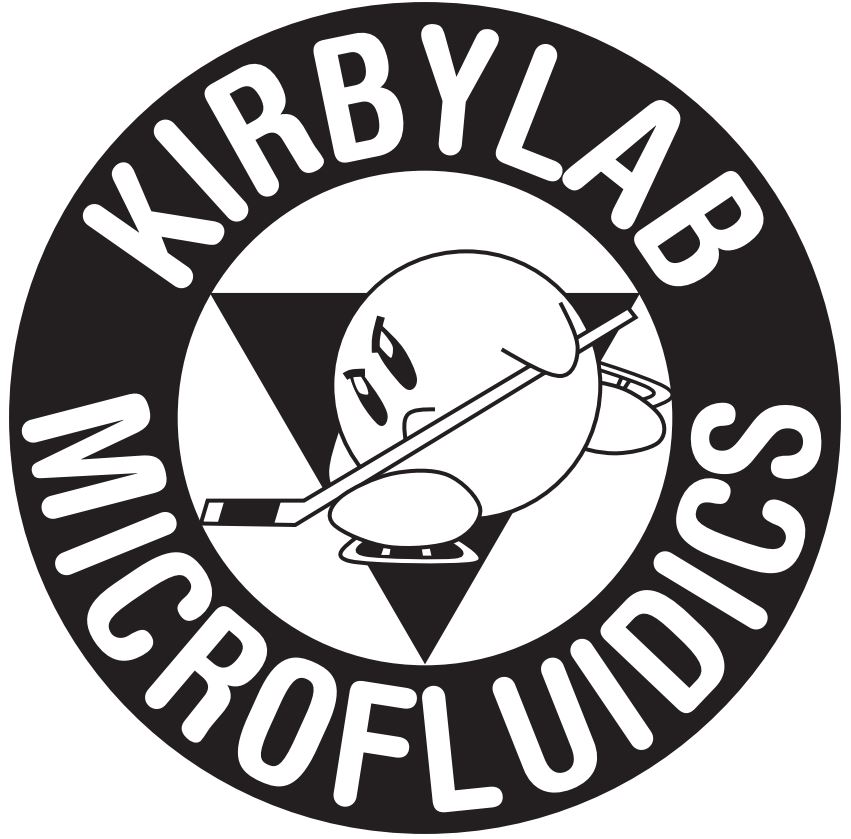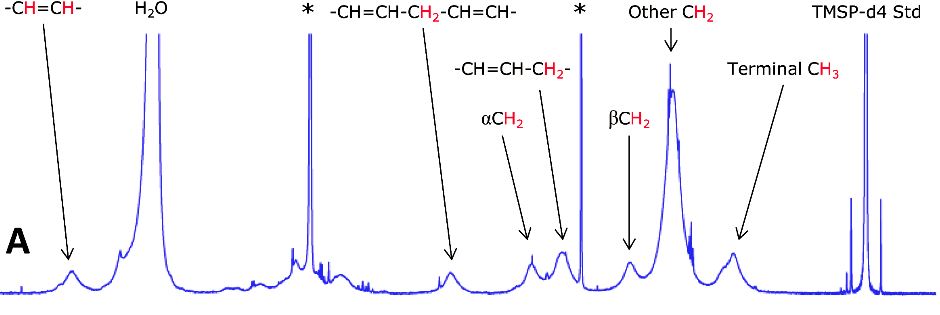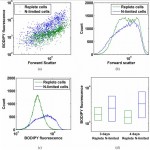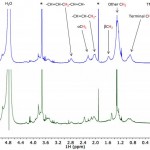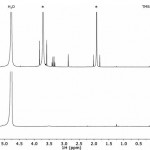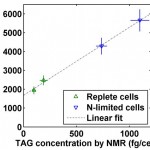PLoS ONE, 2015: Measurement of Lipid Accumulation in Chlorella vulgaris via Flow Cytometry and Liquid-State 1H NMR Spectroscopy for Development of an NMR-Traceable Flow Cytometry Protocol
Citation: Bono Jr. MS, Garcia RD, Sri-Jayantha DV, Ahner BA, Kirby BJ. Measurement of Lipid Accumulation in Chlorella vulgaris via Flow Cytometry and Liquid-State 1H NMR Spectroscopy for Development of an NMR-Traceable Flow Cytometry Protocol, PLoS ONE, 10(8): e0134846 2015. doi pdf
Abstract: In this study, we cultured Chlorella vulgaris cells with a range of lipid contents, induced via nitrogen starvation, and characterized them via flow cytometry, with BODIPY 505/515 as a fluorescent lipid label, and liquid-state 1H NMR spectroscopy. In doing so, we demonstrate the utility of calibrating flow cytometric measurements of algal lipid content using triacylglyceride (TAG, also known as triacylglycerol or triglyceride) content per cell as measured via quantitative 1H NMR. Ensemble-averaged fluorescence of BODIPY-labeled cells was highly correlated with average TAG content per cell measured by bulk NMR, with a linear regression yielding a linear fit with r2 = 0.9974. This correlation compares favorably to previous calibrations of flow cytometry protocols to lipid content measured via extraction, and calibration by NMR avoids the time and complexity that is generally required for lipid quantitation via extraction. Flow cytometry calibrated to a direct measurement of TAG content can be used to investigate the distribution of lipid contents for cells within a culture. Our flow cytometry measurements showed that Chlorella vulgaris cells subjected to nitrogen limitation exhibited higher mean lipid content but a wider distribution of lipid content that overlapped the relatively narrow distribution of lipid content for replete cells, suggesting that nitrogen limitation induces lipid accumulation in only a subset of cells. Calibration of flow cytometry protocols using direct in situ measurement of TAG content via NMR will facilitate rapid development of more precise flow cytometry protocols, enabling investigation of algal lipid accumulation for development of more productive algal biofuel feedstocks and cultivation protocols.
Figures:
- Fig 1. Flow cytometry measurements for Chlorella vulgaris cells labeled with BODIPY 505/515. All axes are logarithmic scale. (a) Flow cytogram of BODIPY fluorescence vs. forward scatter of cells after four days culturing in replete or nitrogen-limited medium. (b) Histogram of forward scatter for cells after four days culturing in replete or nitrogen-limited medium. (c) Histogram of BODIPY fluorescence for cells after four days culturing in replete or nitrogen-limited medium. (d) Box plot of medians and interquartile ranges (25th and 75th percentiles) for BODIPY fluorescence of cells after three and four days culturing in replete or nitrogen-limited medium. http://dx.doi.org/10.1371/journal.pone.0134846.g001
- Fig 2. Representative measured NMR spectra for suspensions of intact Chlorella vulgaris cells cultured in (A) nitrogen-limited and (B) replete media. http://dx.doi.org/10.1371/journal.pone.0134846.g002
- Fig 3. Background spectra for (A) the TAP medium that the algae were cultivated in and (B) the inorganic NMR analysis solution that the algae were resuspended in for 1H NMR measurements. http://dx.doi.org/10.1371/journal.pone.0134846.g003
- Fig 4. Mean BODIPY fluorescence per cell of each Chlorella vulgaris culture as measured via flow cytometry, plotted with respect to mean triacylglyceride (TAG) concentration per cell as measured via liquid-state 1H NMR. Error bars for TAG concentration by 1H NMR are calculated via propagation of uncertainty from the measured variation in estimated initial cell concentration and NMR quantification described in the evaluation of measurement precision section. http://dx.doi.org/10.1371/journal.pone.0134846.g004
